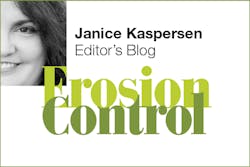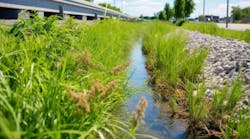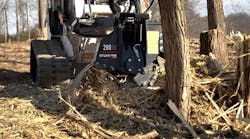Editor's note: This blog was originally published on February, 6, 2019.
There are many ways to measure erosion, and these can sometimes vary depending on what we’re trying to achieve. A few years ago, a professor of agronomy at Iowa State University made the news with an estimate that topsoil loss in that state—by his reckoning, up to 12 times the government’s estimate of 5.4 tons per acre per year—was costing a billion dollars a year. He used sophisticated modeling and satellite imagery to estimate the loss, correlating each individual farm’s erosion with a number of factors like soil type, topography, type of tillage used, and specific conservation efforts taken.
Not everyone has resources like this available, of course. In Iran, the Ministry of Agriculture has become concerned about the country’s erosion problem. This article from the Tehran Times claims that the country’s overall annual erosion rate on agricultural land has reached 16.7 tons per hectare. (A hectare is just about 2.5 acres.) The ministry compares Iran’s rate of erosion with the European Union’s (a “moderate to high” 5 tons per hectare per year) and the United States’ (30 tons per hectare per year).
The article cites Eurostat and Science Direct for its statistics. A 2013 article in Agriculture, however, arrives at different numbers for both Europe and the US: “The lowest average erosion rates on cropland occur in the United States and Europe ranging from 10 to 15 t/ha/year; erosion rates in the United States have dropped from an average 16.4 t/ha/year in 1982 to 10.8 t/ha/year in 2007. However, even these relatively low rates of erosion greatly exceed the average rate of natural soil formation from the parent soil material; under agricultural conditions the soil formation rate ranges from 0.5 to 1 t/ha/year. This means that most U.S. cropland is losing soil faster than soil formation can replace it.”
Which estimates are correct? And does it really matter? Estimating the “average” loss for a large region like the US or Europe or even for a smaller area like Iran—or Iowa—is necessarily an imperfect calculation; as the Iowa agronomist understood, many factors come into play, such as soil type, soil health, use—or not—of cover crops, grazing practices, till or no-till approaches, climate effects such as drought or periods of heavy rainfall, the success—or not—of conservation programs… the list is long. It could be argued that as long as we’re looking at the causes and encouraging farmers to take steps to reduce erosion, the exact rate of loss is less important than the trend upward or downward.
On the other hand, statistics about soil loss—and nutrient loss from farmland—have figured prominently in discussions of the 2018 Farm Bill and its changes to existing conservation programs. Some programs, like the Conservation Stewardship Program, reward landowners based on the success of their efforts—pay for performance, essentially. What measures of erosion—on ag lands or elsewhere—are most used in your area, and what changes would you like to see in how we calculate and talk about soil loss?






